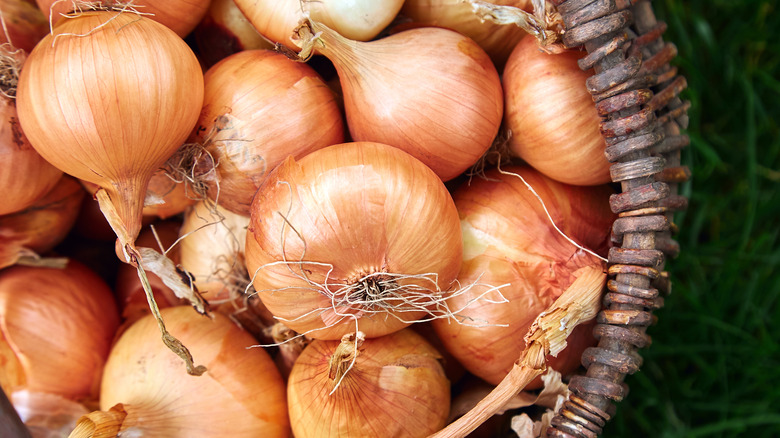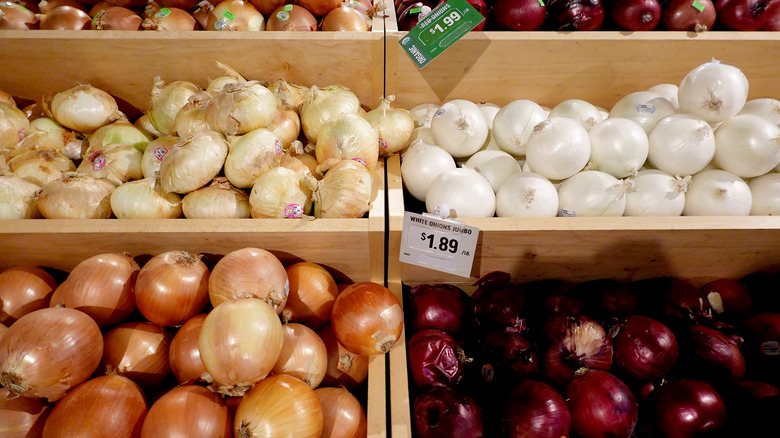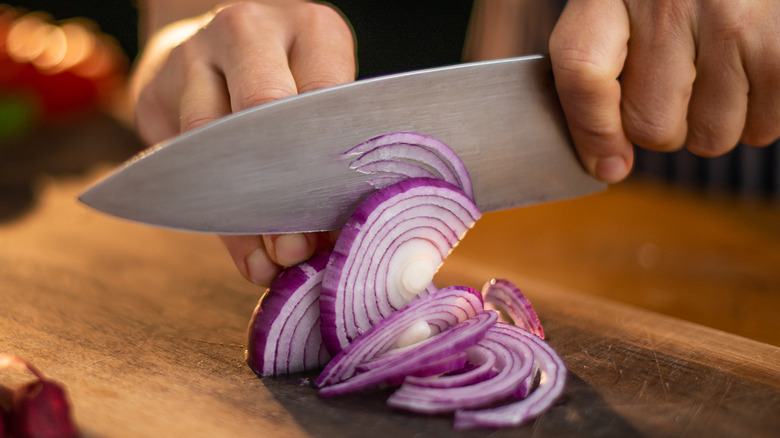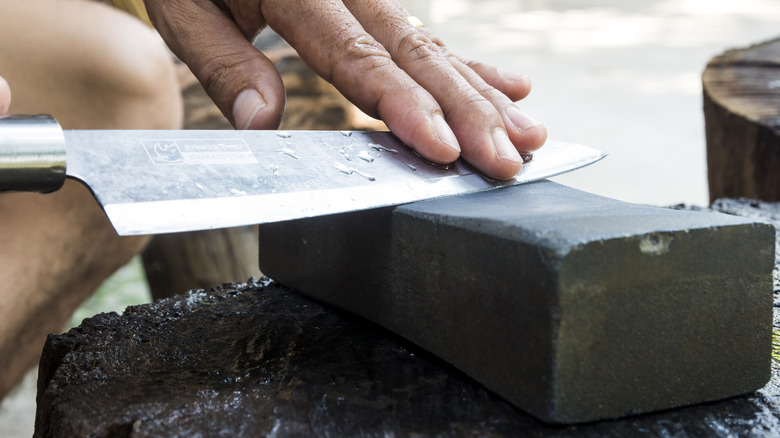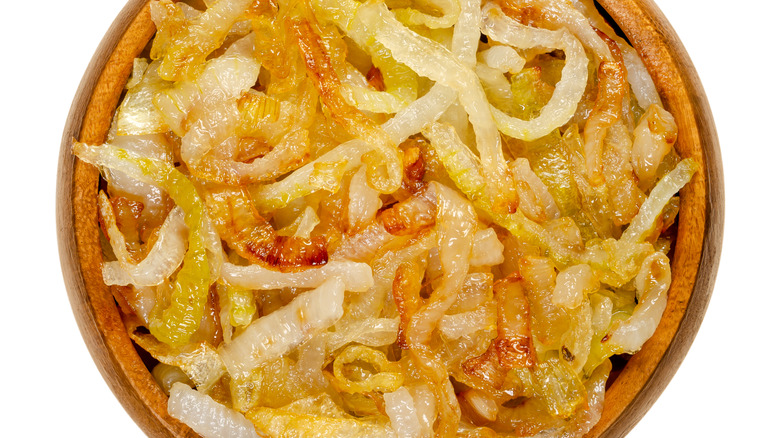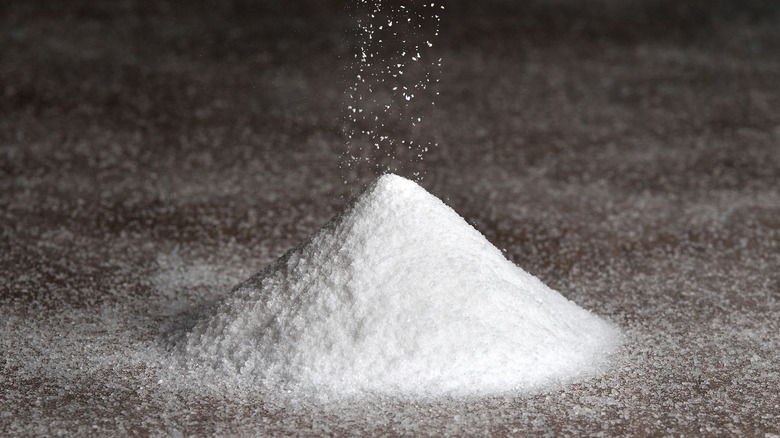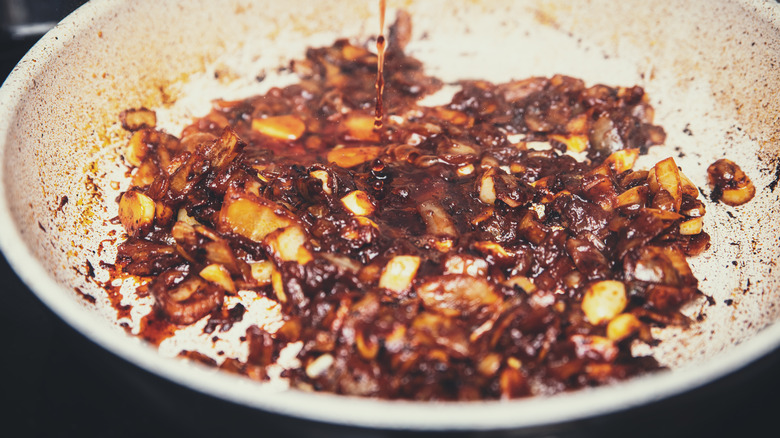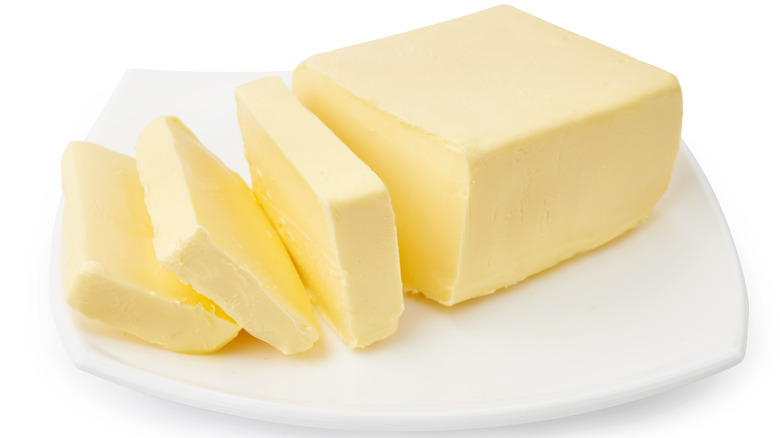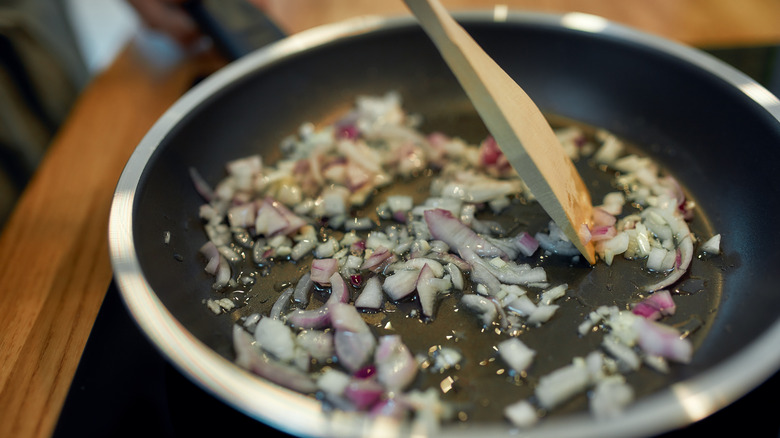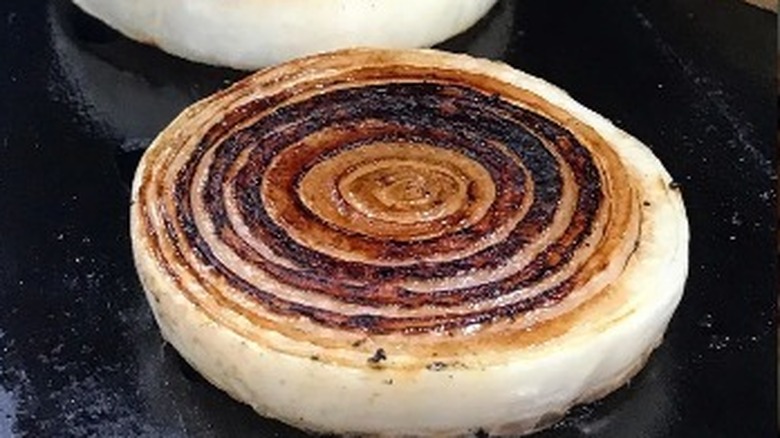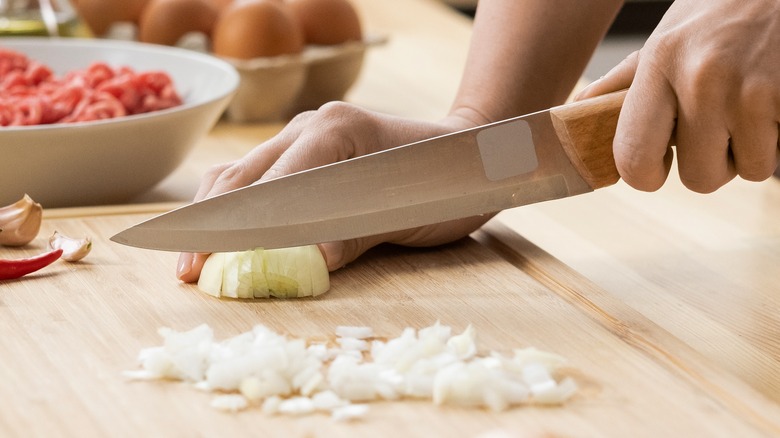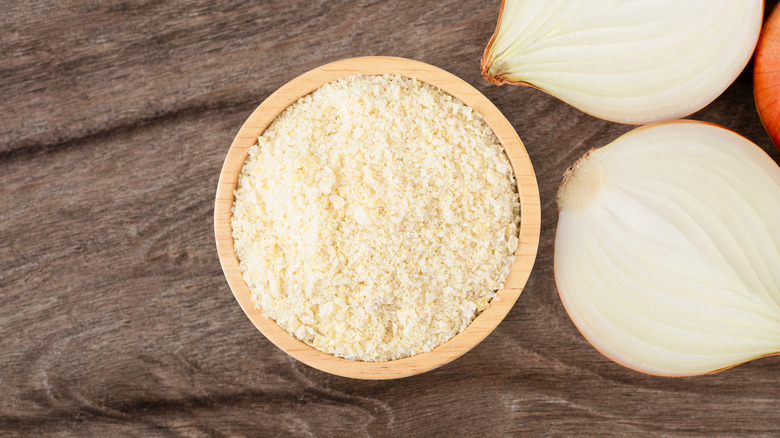Mistakes Everyone Makes When Cooking Onions
Onions are one of the most powerful veggies in the world. While carrots, bell peppers, and cabbage all have their place, they could never compete with the powerhouse of flavor that is the onion. Onions can be added to a huge variety of savory dishes and seem to add a layer of complexity and punch of flavor that few other ingredients provide. Plus, they're inexpensive, readily available, and used in countless international cuisines. Basically, if you ever spend any time in the kitchen at all, you're going to want to learn how to cook with onions to the best of your ability.
But here's the thing: Even if you believe that you're already an onion expert, there's a good chance you're still making mistakes with this most precious of alliums. We've decided to take a look at some of the most common mistakes so you can see where you're going wrong when you decide to cook with onions. By avoiding these mistakes, you can make sure that every onion-imbued dish on your menu comes out cooked to absolute perfection.
Without further ado, here are some of the most common mistakes everyone makes when cooking with onions.
Not choosing the right onions
The first mistake people make with onions takes place before they ever step foot in the kitchen. This is the kind of mistake that's easy to make while you're still shopping for your ingredients. If you have a certain dish in mind, you may think you can just go to the produce section and pick any random onion that catches your eye. What you may not realize is that certain onions are better for specific uses than others. If you want to make sure your finished dish comes out tasting delicious, it's important to choose the right variety.
According to Bon Appétit, yellow onions are a great all-purpose option: They can be eaten raw or cooked down, and they're probably going to taste good in most contexts. Red onions, on the other hand, are a bit stronger, which is why they're often used raw. If the flavor is too intense, soak them in a bit of water to mellow them out a bit before adding them to salads or sandwiches. White onions are milder than both of these other varieties, which means that they should be cooked rather lightly or served raw and diced. And when it comes to green onions? Same thing: You'll want to cook them slowly or slice them and eat them raw.
Cutting the root off when you're chopping
We get it: Chopping an onion can be difficult, especially if you don't really know what you're doing. We've all been there, but if there's one onion-cutting tip you should remember, it's this: Don't cut off the root! Gordon Ramsay highlights the importance of keeping the root intact. First of all, if you cut it off, you're more likely to get a strong hit of onion vapor in your eyes. Once the crying starts, it's hard to stop, so you'll clearly want to avoid this if at all possible.
However, the root plays another role. If you cut the root off, all of the different layers of the onion are loose and can be liable to fold or slip while you're chopping. If you keep the root on, it holds all of these layers in place, ensuring that you get a cleaner and easier dice.
Of course, chopping an onion well comes down to more than just keeping the root intact, but it's a good place to start if you're an onion-chopping newbie.
Using a dull knife
Another prep mistake you'll want to avoid at all costs: using a dull knife to chop your onions. This is important for a few different reasons. First of all, using a dull knife on just about any kind of produce can be dangerous. If the knife is dull, it's much easier for it to slip around. If your fingers are in the way when this happens, it could lead to a big accident that you'll want to avoid at all costs. There's nothing that dampens your appetite quite like a trip to the emergency room, stitches, and having to clean up the mess when you get home.
However, using a dull knife to chop onions also lends itself to another problem. A dull knife that slips and slides around is more likely to crush parts of the onion, which in turn allows the compound in onions responsible for causing your eyes to water to be released, according to Bon Appétit. If you don't want to suffer while you're in the process of chopping, making sure you have a fresh, well-sharpened knife can work wonders.
Not protecting your eyes
No matter how sharp you make sure your knife is, there's still a good chance that chopping onions is going to make you teary-eyed at some point. It can be a big bummer, especially when you're trying to get through the process of chopping several onions in a row. So how do you make sure you avoid having to leave the kitchen every few chops just to get your eyes into some fresh air? Bon Appétit says that protecting your eyes directly is probably your best bet.
If you wear contacts, you're already in luck. That's because contacts protect your eyes from the compound in onions that causes your eyes to water, so you're already in the clear: You're probably not going to suffer from the chopping process too much. However, if you don't wear contacts, you can look at other solutions. Wearing goggles might sound silly, but who cares if you look a little funny in your own kitchen? If you have a COVID-style face shield, that may help cut down on the crying, too. Glasses may offer a bit of protection, but generally won't work as well as something that sits closer to your face.
Believing recipe developers about how long it takes to caramelize onions
Have you ever read a recipe that instructed you to caramelize your onions in 15 minutes? We hate to break it to you, but no onion in the history of the world has ever caramelized that quickly in anyone's kitchen. In fact, according to Slate, you're looking at about 35-40 minutes to properly caramelize onions. After all, that jammy consistency and sweet flavor don't come out of nowhere: It takes some time and standing over the stove to get the results you're looking for.
Sometimes, recipe developers underestimate the time it takes to cook a dish to make it seem quicker and easier to accomplish than it really is. A lot of that comes down to how the internet works, but the moral of the story is: Don't believe a recipe when it says you can get beautifully caramelized onions in 15 minutes or less. Instead, read through the recipe before you get cooking, and add a few minutes onto the cooking time if you see instructions to "caramelize" your onions for five minutes. Once you start caramelizing onions on the regular, you can see these errors in recipes from a mile away.
Not adding salt to your cooking onions
Is there a more magical ingredient in the world than salt? Onions may be impressive with their versatility, but salt is important in pretty much every dish — why wouldn't you expect to use it heavily when you're cooking your onions? If you want to imbue your food with as much flavor as possible, you should sprinkle some salt in your pan every time you add something new to the mix. You don't want to overdo it, as that could lead to too much salt in your dish, but generally, a sprinkle of salt early in the cooking process is always a good idea.
Onions are no exception to this rule, per Splendid Table. Why is this such an important step? Well, when you add salt to cooking onions, it helps draw the water out of the onions. This allows them to brown more easily during the cooking process. Since the salt helps break the onions down, you get a softer, sweeter, and more savory end result when cooking this way. Remember to do this immediately after you add your onions to the pan. It's an extra step, but it makes a big difference that it's pretty much always worth the few seconds.
Forgetting to deglaze the pan
Once your onions look nice and caramelized, you'll know it's time to move on to the next step of your recipe. However, before you do so, you should make sure you get all of the flavor those onions left behind. According to The Kitchn, during that process, fond develops on your pan. Fond is a kind of glaze left behind by the sugars in the onion. Though it may be a hassle to clean up if you just take your onions out of the pan and move on to the next step, you can harness all that flavor and use it to make your meal even more delicious.
All you'll need to do to take advantage of the fond is to deglaze your pan. Deglazing just means that you're going to add a liquid to the pan and cook your onions in it for a bit longer. Water works perfectly here, but if you're trying to add even more flavor to the dish, broth or vinegar can take it to the next level. Just remember to cook off some of that liquid before you take the onions off the stove.
Only using butter to caramelize your onions
If you've tried to caramelize onions before, you already know that you need to add fat to the pan to keep the onions from burning. Since there are many different fats to choose from, you may be wondering what works best. Many cooks prefer to use butter because it will make your onions even more flavorful than other fats, like canola or avocado oil. However, if you've ever tried this method just to end up with burnt onions, you're probably wondering why.
Trial and Eater says that although you may be able to caramelize your onions only using butter, you're better off using a combination of both butter and olive oil. Why? It all comes down to the smoke points of these different fats. Butter has a low smoke point, which means it's going to cook off quite quickly. When this happens, there isn't enough fat in the pan and your onions end up burning. However, high-quality olive oil has a higher smoke point than butter, which means it's going to stick around for longer, protecting your onions from the heat. When you use a combination of both of these fats, you get both the flavor from the butter and the protective coating from the oil.
Crowding the pan
Have you ever ended up with soggy, sad onions when you were trying to achieve the brown jamminess of your dreams? If you're caramelizing your onions or just trying to crisp them in a pan, you'll want to make sure you're not using too many onions at once. When you add too many onions to a pan at the same time, you're going to overcrowd the pan. According to Wholesome Yum, this is a big mistake, especially if you're trying to brown your onions.
Why is crowding your pan such a big problem? When you do this, steam from the cooking onions is going to get trapped in the pan. All of this extra moisture is going to end up steaming your onions, which won't let them develop that browning you're looking for. Of course, if you want to steam your onions, go ahead and crowd your pan as much as you like. But for those times when you're going trying to crisp or caramelize your onions, you'll want to make sure you don't put too much in the pan all at one time. Your best bet is to either cook your onions in batches or get another pan going at the same time.
Never grilling your onions
Caramelizing onions may sometimes seem like the default, but it's a process that can take a long time, and it's just not appropriate for every recipe. That being said, there are plenty of other methods for cooking those onions you have sitting around the kitchen. One of our favorite ways to prepare onions is by grilling them. It makes the perfect veggie side dish during the warm months when you already bust the grill out on a regular basis, and it takes less time than caramelizing them.
Although you can grill pretty much any type of onion, Rachael Ray of Food Network suggests grilling red onions. Not only do they taste great when they're just slightly grilled, but they hold onto plenty of their crunch. They're also beautiful and brighten up your plate at the same time. She suggests coating them in olive oil, though you can use any kind of oil you have on hand. Then, sprinkle them with salt and pepper if you want to keep things simple. Of course, you can always add more seasonings or even a marinade if you're trying to make your onions even more flavorful.
Finally, place your onions on the grill alongside whatever else you're cooking, and keep them on for 5-7 minutes per side. Check them regularly to ensure they're not getting too brown. When you taste them, you may just realize that grilling is your new favorite method for cooking onions.
Not knowing when to slice and when to dice
Knowing how to both slice and dice an onion is important for different recipes. Sometimes, like when you're making a salad, you're going to want to dice your onions as finely as possible so they can mix in with the other ingredients. At other times, slices are going to be the best option — this might be the case when you're trying to caramelize your onions. Pay close attention to what the recipe you're following calls for, and think about what you want out of your dish. If you want a more intense onion flavor, you might choose to slice. When you want that flavor more evenly distributed, dicing may be the way to go.
Luckily, Serious Eats tells us how to do both. When you dice an onion, you're going to cut it in half, remove the skin, and then "cut along the Z axis," through the middle of the onion. Then, slice into it the other way in sections. Now, you're ready to dice. The bulb holds everything together, so you don't have to worry about your knife slipping. When you slice, though, just cut your onion in half, remove the skin, and slice away: it's definitely the easier option if you're trying to get in and out of the kitchen quickly.
Never using onion powder
Some will tell you to never, ever use onion powder, but here's the thing: Sometimes, cooking is hard enough as it is. If you have a busy lifestyle, finding time to cook on a regular basis is almost certainly going to be a challenge. You may have time to cook a full-fledged, from-scratch meal on occasion, but that may not always be doable. When you're just trying to get dinner on the table after a long day and you want to add a little bit of flavor to your meal, onion powder can be a great way to go.
Now, are you going to get the same effect from onion powder as you would if you were to use a fresh onion? Of course not. But sometimes, that extra sprinkle of flavor can make a big difference. Not to mention, some recipes actually specifically call for onion powder. Although we totally appreciate the beauty of a fresh onion, that doesn't negate the necessity for the occasional use of onion powder.
